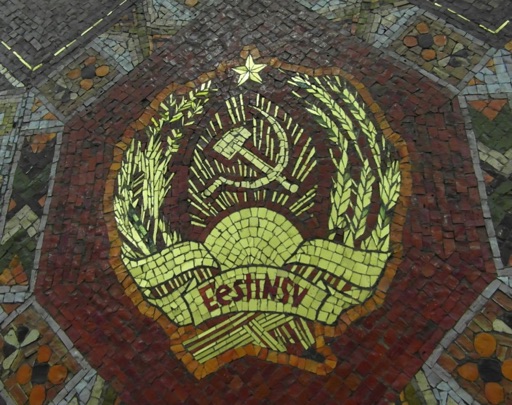Uppsats sovjets propaganda

TARTU ÜLIKOOL HUMANITAARTEADUSTE JA KUNSTIDE VALDKOND AJALOO JA ARHEOLOOGIA INSTITUUT UUSIMA AJA OSAKOND
Eesti Nõukogude Sotsialistliku Vabariigi välisministeerium ja selle tegevus 1960. aastatel
Bakalaureusetöö 12 EAP Johannes Vahe PhD Kaarel Piirimäe TARTU 2019
https://core.ac.uk/download/pdf/237084527.pdf
Sammanfattning
Estlands socialistiska sovjetrepublikens utrikesministerium på 1960-talet.
Händelserna 1939 till 1944 förändrade radikalt Estlands historia. En av de politiska Sovjetunionens manövrar i de nyligen ockuperade länderna var skapandet av främmande angelägenhetskommissarier som senare fick namnet utrikesministerier. Oundvikligen, ESSR-ministeriet of Foreign Affairs verkade fram till 1990. Ämnet har diskuterats relativt lite i historieskrivning. Huvudfokus har hittills varit UD:s tidiga år. Således, anstaltens verksamhet under 1960-talet har varit mindre studerad.
Författaren pekar på ESSR-utrikesdepartementets verksamhet på 1960-talet. De studien speglar byråns verksamhetsområden, deras inriktning och de aspekter de övervägde Viktig. Arbetet undersöker också underordnade relationer mellan Moskva och Förbundsrepubliken, sammansättningen, dess handlingsplaner, budgeten och interna och externa relationer. Dessutom ligger fokus på samarbete på alla nivåer mellan departement och ev andra sovjetiska myndigheter. Hela denna period åtföljs av det kalla krigets situation och verksamhet i den estniska diasporan.
Under ESSR:s suveränitet var utrikesministeriet underordnat Sovjetunionens utrikesministerium i Moskva. Det är också modigare att hävda att den utländska Ministeriet var en förlängning av ESSR KGB och att mycket av institutionens verksamhet härrörde från KGB, och den information som erhölls riktades dit. Diplomater och arbetare från Sverige och andra ambassader var också aktivt involverade i samarbetet med Utrikesministeriet för ESSR och KGB, skapa nätverk och propagandaevenemang bland utlänningar.
Utrikesministeriets huvudsakliga verksamhetsområde bibehölls sedan 1944 och omfattade frågorna om den estniska diasporan. Detta gjordes genom att övervaka utländska medier, skriva information och vidarebefordra den till berörda myndigheter. Använder systematiskt stora mängder av arkivmaterial, individer med aktuella minnen och grundliga arbeten, var det möjligt att belysa hela eller delar av utrikesdepartementet, inklusive sammansättning, budget, bibliotek, konsulär verksamhet, utvecklings- och handlingsplaner.
Summary
The Ministry of Foreign Affairs of the Estonian Soviet Socialist Republic in the 1960s.
The events of 1944 radically changed the course of Estonian history. One of the political manoeuvres of the Soviet Union in the newly occupied countries was the creation of foreign affairs commissariats which were later named foreign ministries. Inevitably, the ESSR Ministry of Foreign Affairs operated until 1990. The topic has been discussed relatively little in historiography. The main focus so far has been the early years of the Foreign Ministry. Thus, the institution's activities in the 1960s have been less studied.
The author points out the activities of the ESSR Ministry of Foreign Affairs in the 1960s. The study reflects the areas of activity of the agency, their focus, and the aspects they considered important. The work also examines subordinating relations between the Moscow and the Federal Republic, the composition, its action plans, the budget and internal and external relations. In addition, the focus is on cooperation at all levels between ministries and possibly other Soviet authorities. All this period is accompanied by the Cold War situation and the activities of the Estonian diaspora.
Under the sovereignty of the ESSR, the Ministry of Foreign Affairs was subordinate to the
Foreign Ministry of the USSR in Moscow. It is also more courageous to argue that the Foreign Ministry was an extension of the ESSR KGB and that much of the institution's activities originated from the KGB, and the information received was directed there. Diplomats and workers from Sweden and other embassies were also actively involved in cooperation with the Foreign Ministry of the ESSR and the KGB, creating networks and propaganda events among foreigners.
The main field of activity of the Ministry of Foreign Affairs was maintained since 1944 and included the issues of the Estonian diaspora. This was done by monitoring foreign media, writing information and forwarding it to the relevant authorities. Using systematically large amounts of archival materials, individuals with timely memories and thorough works, it was possible to shed light on all or part of the foreign ministry, including composition, budget, library, consular activities, development and action plans.
Mina, Johannes Vahe,
1. annan Tartu Ülikoolile tasuta loa (lihtlitsentsi) minu loodud teose
„Eesti Nõukogude Sotsialistliku Vabariigi välisministeerium ja selle tegevus 1960. aastatel“,
mille juhendaja on dotsent Kaarel Piirimäe, reprodutseerimiseks eesmärgiga seda säilitada, sealhulgas lisada digitaalarhiivi DSpace kuni autoriõiguse kehtivuse lõppemiseni.
2. Annan Tartu Ülikoolile loa teha punktis 1 nimetatud teos üldsusele kättesaadavaks Tartu Ülikooli veebikeskkonna, sealhulgas digitaalarhiivi DSpace kaudu Creative Commonsi litsentsiga CC BY NC ND 3.0, mis lubab autorile viidates teost reprodutseerida, levitada ja üldsusele suunata ning keelab luua tuletatud teost ja kasutada teost ärieesmärgil, kuni autoriõiguse kehtivuse lõppemiseni.
3. Olen teadlik, et punktides 1 ja 2 nimetatud õigused jäävad alles ka autorile.
4. Kinnitan, et lihtlitsentsi andmisega ei riku ma teiste isikute intellektuaalomandi ega isikuandmete kaitse õigusaktidest tulenevaid õigusi.
Johannes Vahe 23.05.2019

I Moskvas metro finis denna mosaik.

Det går aldrig att säkert veta vad som gömmer sig i Ryssland.
Vad är tanken med kriget i Ukraima? Är det att utrota ett folk?

KGB

